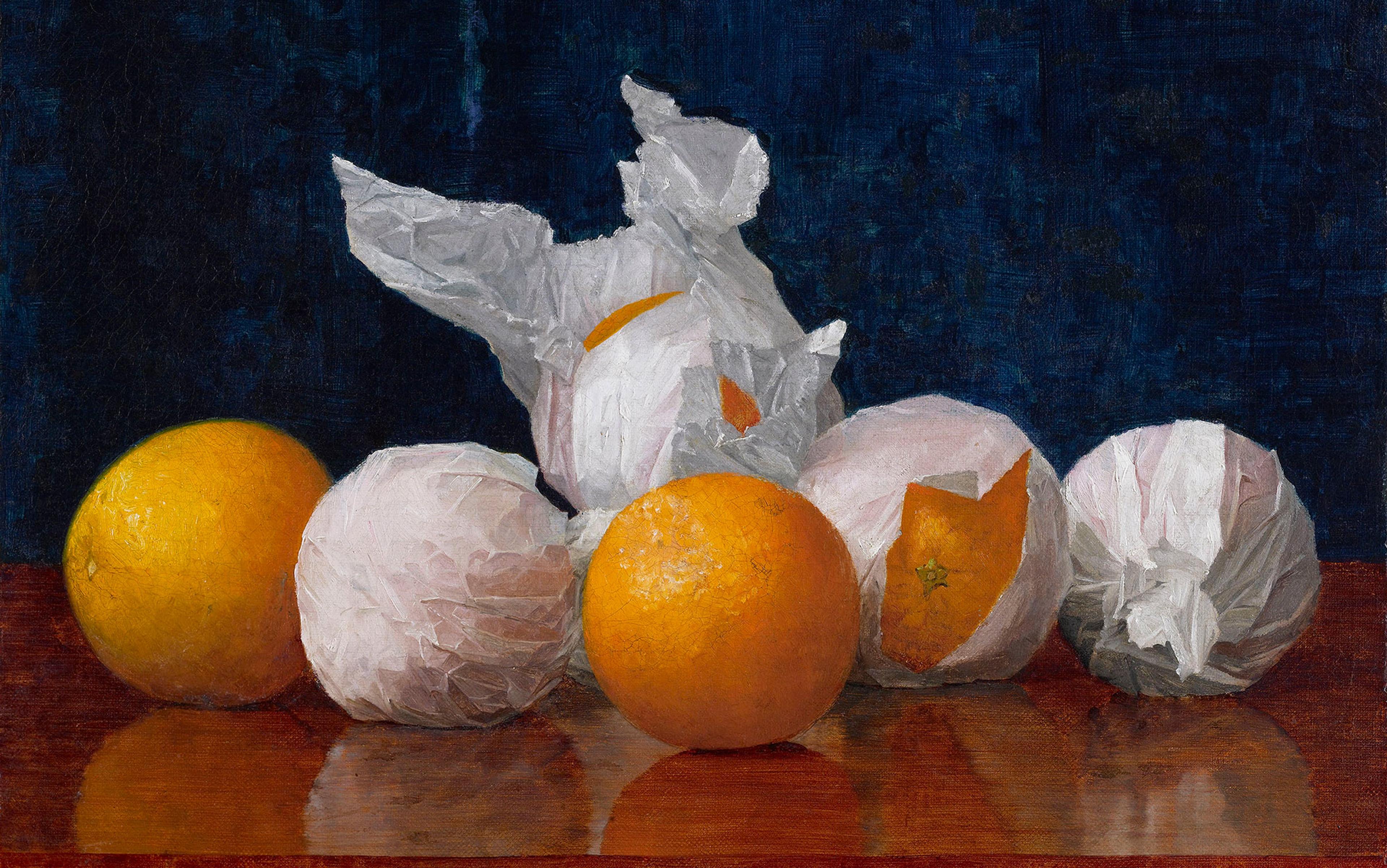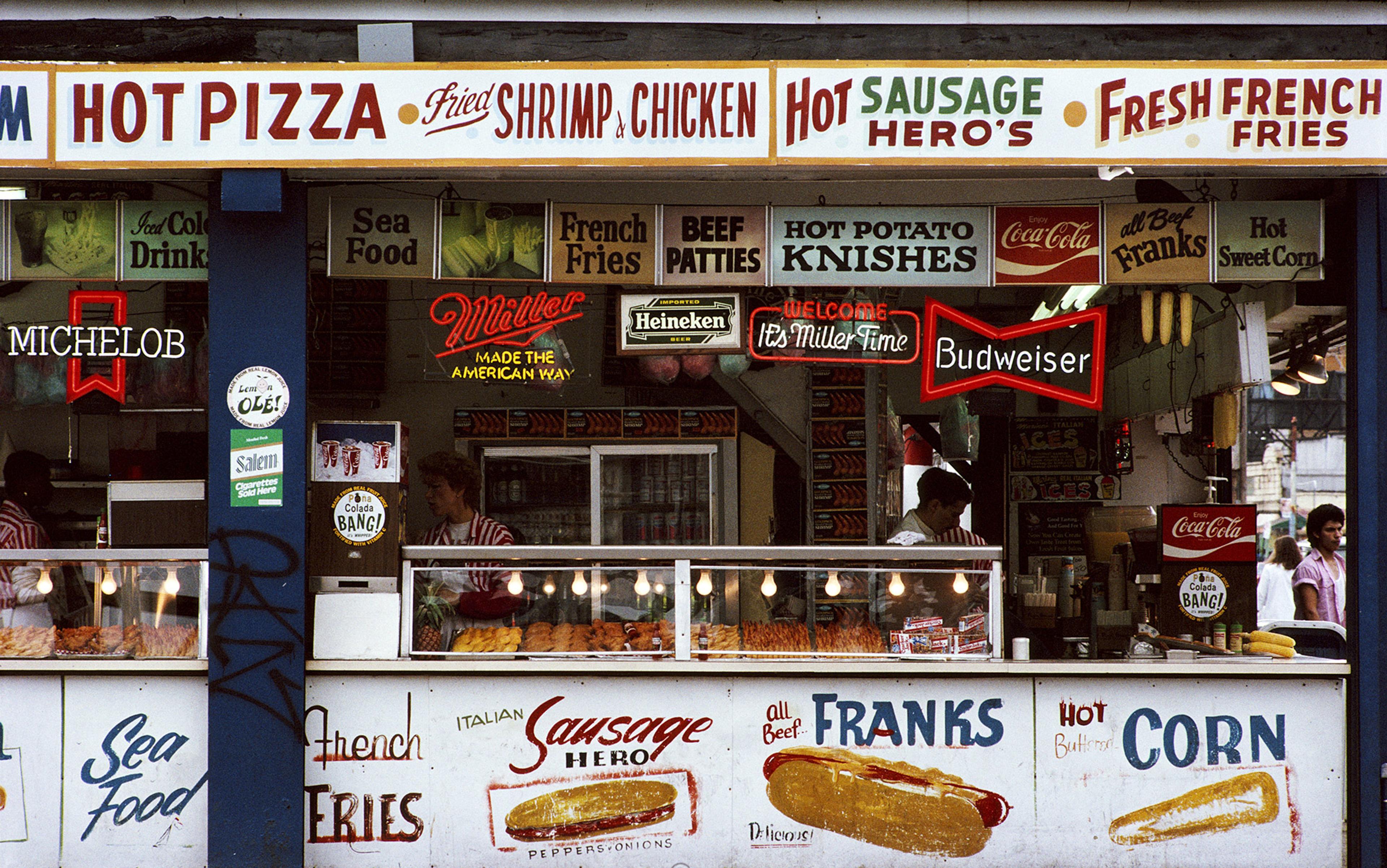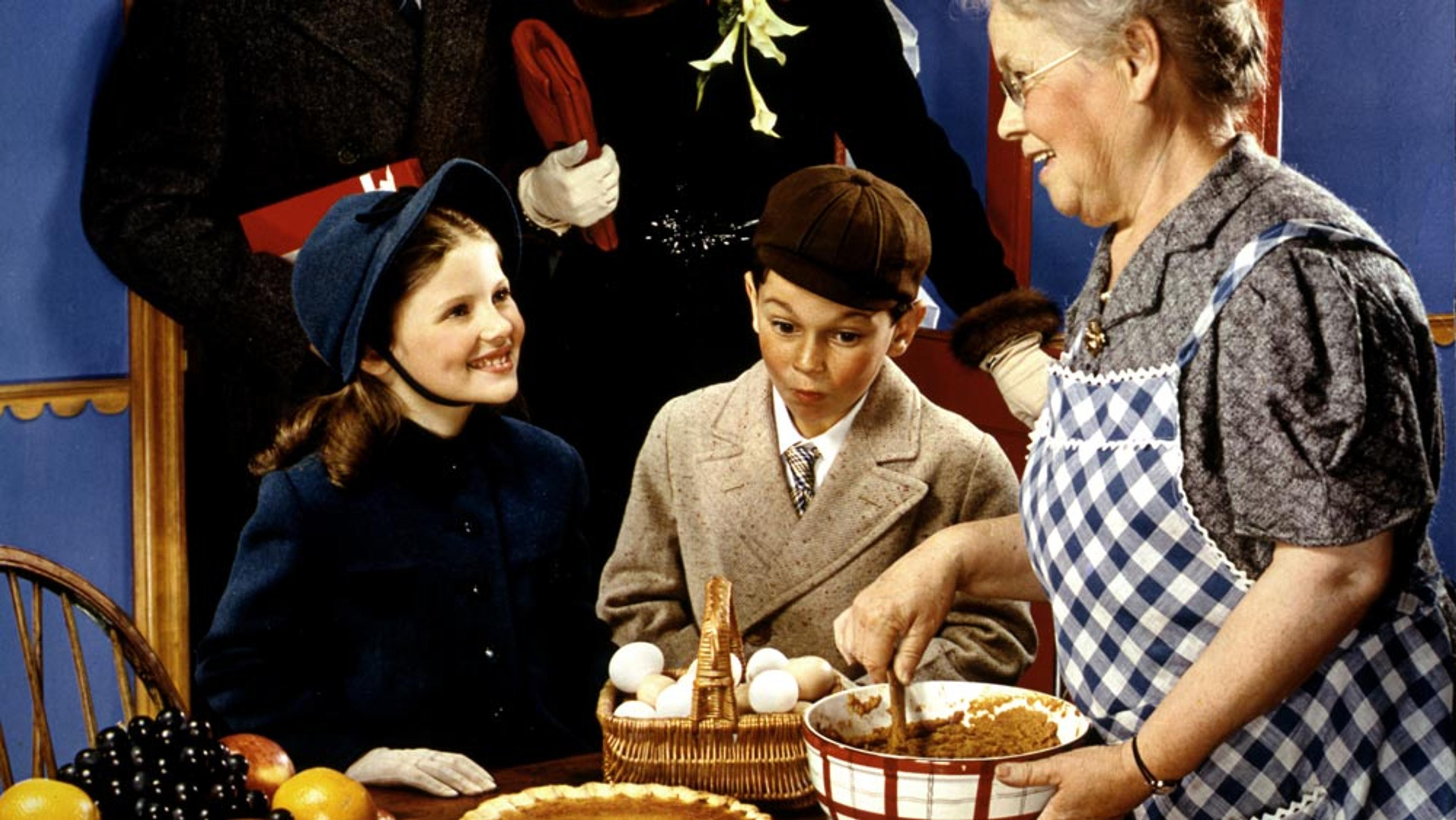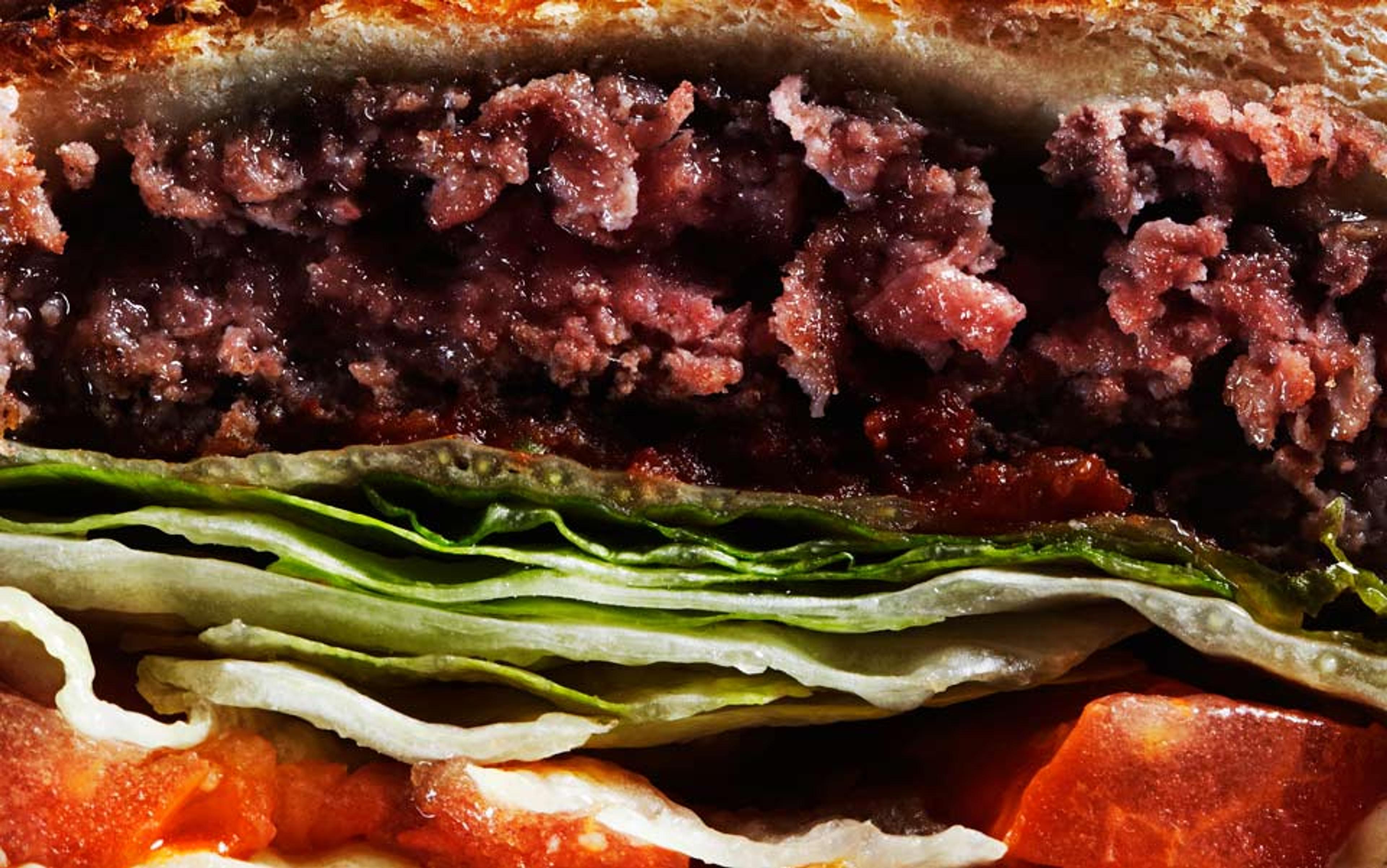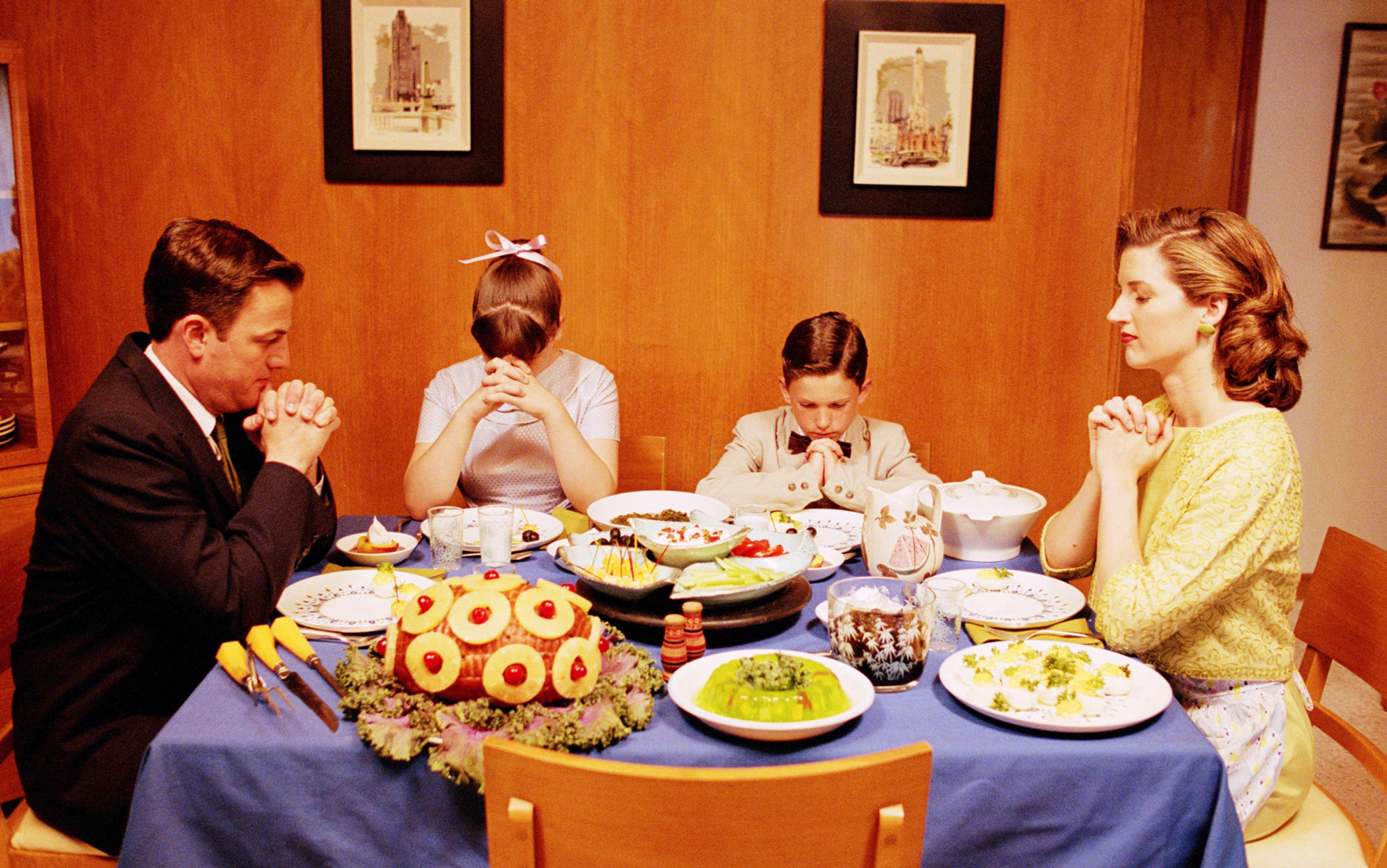In 1913, when the world seemed to totter precariously between progress and catastrophe, Henry Theophilus Finck published a book arguing that the source of the United States’ troubles was its citizens’ indifference to the attractions of a good meal. ‘The most important problem before the American public,’ he insisted in Food and Flavor: A Gastronomic Guide to Health and Good Living, ‘is to learn to enjoy the pleasures of the table.’ Part-manifesto, part-scientific treatise, part-culinary travelogue, Finck’s remarkable volume rejects puritanical hang-ups around gustatory indulgence, and proposes gourmandising as the key to both personal health and US national advancement.
Finck argued that ‘Flavour’ – transcribed throughout the book ‘with a big “F” to emphasise its importance’ – was not a luxury, but a necessity. Enjoying ‘the pleasures of the table’, Finck wrote, ‘is our moral duty’. Even more, it was a civic responsibility. ‘We have not as a nation understood that there is nothing in the world on which our health and hourly comfort, our happiness and our capacity for hard work, depend so much as on the Flavour of food – those savoury qualities which make it appetising and enjoyable, and thus digestible and helpful,’ he wrote. The future of the US as a vital, productive, progressive nation depended on Americans taking flavour seriously.
During his lifetime, Finck was best-known as a music critic. Born in Missouri in 1854 to German immigrant parents, he had grown up in rural Oregon – he was the first Oregonian to attend Harvard College – and had travelled widely throughout the US, as well as in Europe and Japan. He was in Germany for the first Bayreuth festival in 1876, which he wrote about for the New York World. He went on to serve as the New York Evening Post’s chief music writer, championing composers such as Franz Liszt and Edvard Grieg during a 40-year career at the paper. A polymath, Finck’s interests were far-ranging. In addition to many volumes on music, his published works include a theory of romantic love, a treatise on gardening, and a dieting book.
Finck took up the cause of deliciousness at a time when the food that people ate and where it came from were changing rapidly. Industrialisation, urbanisation and new technologies such as cold storage, canning and hydrogenation were transforming how food was produced and consumed. More Americans were eating food prepared outside the home, including processed food made in factories by giant companies such as Heinz, Campbell’s, and the National Biscuit Company (Nabisco). Finck fretted that these changes made for an increasingly ‘ungastronomic America’. Everywhere flavour receded before increased profits or improved efficiency. ‘Time was when a crisp slice of bacon would give zest to a whole breakfast,’ Finck complained, ‘but the bacon served now… has no more flavour than sawdust,’ as chemical preservatives replaced time-honoured methods of smoking and curing. Machine-polished rice was white and ‘pretty to look at’ but, ‘deprived of its nutritious outer parts’, it was ‘as tasteless as the paste that a paper-hanger brushes on his rolls of wallpaper’. The US frozen chicken was ‘foul’; its sodden canned oysters insipid; its butter bland … ‘the melancholy list of gastronomic misdeeds might be prolonged indefinitely,’ he wrote. In comparison, Europe boasted crusty loaves, dazzling varieties of cured meats, savoury vegetable salads and redolent cheeses.
The problem was not that industrial modernity seemed to produce only diluted simulacra of remembered bacon, or that food technology had somehow made it impossible to find honestly smoked whitefish in New York City. The problem, Finck lamented, was that most Americans did not care. They consumed food insensibly, bolting down poorly prepared slop during rushed meals. They had no respect for the art and science of cooking, for the intelligence, skill and creativity of the trained chef. They didn’t know how to savour flavour.
Finck believed that the neglect of flavour had an enervating effect on the US people, despite the country’s bounty of food. Dyspepsia was a ‘national plague’, a chronic condition that sapped the vitality, productivity and fertility of US citizens. ‘The stomach is the source of most preventable diseases,’ Finck testified, a view widely shared by contemporaries ranging from John Harvey Kellogg, whose Battle Creek Sanitarium helped to define the epidemic and its cereal-based cure, to Harvey Wiley, who, as chief of the US Department of Agriculture (USDA) Bureau of Chemistry, had spearheaded the Pure Food and Drug Act of 1906. Unique among his peers, however, Finck pleaded for the primacy of gustatory pleasure in the movement to fortify national health.
Others shared Finck’s misgivings about the changing US diet. The aforementioned Pure Food and Drug Act, the pioneering national law to preserve public health and prevent fraud, reflected the growing consensus that regulation was necessary to ensure the safety and integrity of the food supply. The Bureau of Chemistry – a precursor to the Food and Drug Administration – was deputised to enforce the law, using laboratory methods to detect contamination and to weed out consumer deceptions. The Bureau, however, focused on matters that could be resolved with scientific evidence: whether or not milk was tainted or watered-down, or whether glucose syrup was being dishonestly sold as honey. Its agents were not quality or taste of food staples.
Around the same time, the emerging science of nutrition was changing the way people thought about food and human needs. Nineteenth-century chemical analysis had shown all edible matter to be composed of certain basic types of molecules, such as proteins and starches that the body utilised in distinct ways, and that had definite energetic values, measured in kilocalories. The body was an engine, and food was its fuel. Nutritionists calculated the ideal diet in terms of macronutrients and calories. Maximal nutritional efficiency meant meeting human metabolic needs at the lowest possible cost. This ideology shaped government policies and progressive efforts for food reform. Where did flavour fit into these new nutritional equations? In short, it didn’t. Flavour was not, strictly speaking, necessary: it had no quantifiable ‘food value’. Once flavour was factored out, equivalencies and substitutions between very different foods – cheap baked beans, say, for costlier lamb chops – could be established. As the historian Helen Zoe Veit at Michigan State University pointed out in Modern Food, Moral Food (2013), the rationalisation of food and eating in the Progressive era emphasised self-control and self-discipline, not enjoyment and indulgence. In fact, many health reformers preferred bland, highly processed foods, believing that spices, condiments and other flavourings acted as stimulants that could derange a delicate system.
Into this quantifying consensus on the meaning of rational eating, Finck launched his defence of the pleasures of the table, his plea for gustatory self-indulgence as a ‘moral duty’. Like the proponents of the ‘New Nutrition’, Finck also claimed to have science on his side. In particular, he drew on the work of Ivan Pavlov, the Russian physiologist whose studies on digestion earned him the 1904 Nobel Prize. Pavlov’s experiments on dogs focused on the glands, the ‘chemical factories’ of digestion. Pavlov had shown that the operation of this apparently mechanistic system was dependent on a ‘psychic secretion’ – appetite. Appetite, a mental phenomenon, triggered a cascade of physiological changes – the activation of the salivary glands, the release of digestive enzymes, and the flow of gastric fluid – without which proper digestion could not occur.
In Finck’s account of Pavlov’s findings, ‘appetite juice’ flowed plentifully in those who ate with true desire and delectation. But Finck warned that ‘the man who eats without noticing his food’ was setting himself up for ‘digestive disturbances with all the various diseases following them’. He blamed, in part, modern society, which left man ‘unable to distract his thoughts from his work’ in the ‘incessant turmoil of large cities’. Medical science would be powerless to help until modern man ‘reforms and eats rationally’.
‘Slow and rational eating’ would reveal unsuspected depths of flavour even in hardtack biscuits or potatoes
Eating rationally, for Finck, meant eating with sensual enjoyment and appreciation. By stimulating the appetite, flavour allowed the body to convert the latent, abstract nutritional value of foods into utilitarian value. Here Finck claimed the full experience of taste as the currency that could build and sustain living bodies. If health began in digestion, it was flavour that made the stomach work.
Finck also called upon the authority of popular health reformers, most notably Horace Fletcher, to make his case. Fletcher, known as ‘the great masticator’, claimed to have restored his own debilitated health through a programme of deliberate and intensive chewing. According to Fletcher, dyspepsia resulted from a faulty division of labour between mouth and belly. By chewing every mouthful until it dribbled down the gullet in a state of complete liquefaction, those troubled in body and spirit could achieve strength and serenity, immunity from disease, and odourless bowel movements.
Finck expressed some reservations about Fletcher’s regimen, and does not appear to have subscribed to the full masticatory programme. He did, however, endorse Fletcher’s assertion that ‘slow and rational eating’ would reveal unsuspected depths of flavour even in plain foods, such as hardtack biscuits or potatoes. He approvingly repeated Fletcher’s observation that those who hastily gobble down their meals receive ‘none of the exquisite taste that Nature’s way offers as an allurement for obeying her beneficent demands’.
Finck invoked his own scientific findings to affirm this poetic view of nature and nutrition. As an undergraduate at Harvard, he had studied sensation and perception in humans and animals. A fellowship allowed him to continue his studies in Germany, then the centre of scientific research on the senses. Finck was drawn to the relatively neglected senses of smell and taste. His experiments demonstrated the central role of odour in flavour perception – a connection not widely recognised at the time. ‘Gastronomic delights,’ he noted, ‘come to us through the sense of smell.’
In the 1880s, Finck was among the first to describe a distinct olfactory pathway through the back of the throat, one stimulated by exhalation while eating. This phenomenon, now known as retronasal olfaction, has come to be recognised as crucial to human flavour perception, and also, perhaps, to the evolution of our species.
Finck assembled these pieces into a practical method of eating, one where the habits of the gourmand aligned with the body’s actual needs. The rational eater chewed thoroughly and thoughtfully, each slow exhalation carrying food’s delectable aromas through the nose’s back-door to the perceiving, delighted mind. This not only ‘quintupled’ pleasure and increased connoisseurship, it also stimulated the appetite, readying the body to assimilate food’s nutritional value. In other words, good taste leads to efficient, serene digestion, which builds healthy, disease-free bodies, productive citizens of a strong and vital nation. By connecting sensory experience with physiological wellbeing, Finck’s science of flavour had uncovered a biological circuit where pleasure and virtue coincide.
Once Americans were awakened to flavour-consciousness, Finck predicted the dawning of a ‘Gastronomic America’. Welcome to flavour country. In Finck’s telling, ‘Gastronomic America’ was not just a healthier, more productive place, where pleasures were superabundant. It would occasion a profound reordering of social relations, customs and economies. Cooks would no longer be regarded as low-status labourers, but would achieve new levels of respect, celebrity and remuneration. Food and Flavor contains a lengthy, full-throated celebration of the local, the particular and the regionally specific. Farmers would turn to cultivating varieties of fruits, grains and vegetables that tantalised the palate. Just as novelists had ‘coined large sums by exploiting local colour in their tales’, Finck suggested that women could earn extra money by making preserves and other products that captured local flavours of wild fruits and berries. Manufacturers would favour processes that preserved flavour, even at somewhat higher costs. Flavour, after all, was not just health, it constituted commercial value – an economic force that could turn the food producers who paid attention to it into ‘millionaires’.
Finck’s vision was deliberately non-elite and determinedly democratic. What he called ‘a civilised meal’ should be available, he insisted, ‘not only in those who can cross the ocean and pay for Parisian dainties’, but also to the ‘humblest tiller of the soil or railway employee’. A full third of Food and Flavor comprises a picaresque journey through European capitals and countrysides, detailing the gastronomic highlights of France, Italy, central Europe and Britain. Yet Finck is not interested in replicating old-world food traditions on US soil, but transplanting effective systems for producing and distributing flavourful foods. For instance, Finck describes the networks of refrigerated steamers and express trains in Germany that delivered fresh fish throughout the country; the policies that protected Italian olive oil from cottonseed and other cheaper substitutes; the network of market gardens that supplied Les Halles with vegetables and fruits.
In other words, achieving a ‘Gastronomic America’ would take more than crafty ladies selling their loganberry jam at the farmer’s market. A nation of gourmets required assembling a system that could produce appetising food at scale, distribute it nationally, and make it available at a reasonable cost. ‘Real epicurism is economical,’ he insisted. Finck enumerated ‘three cardinal principles of gastronomy’ that should guide the US:
- The food from which we chiefly derive our nourishment is for the most part cheap.
- We need more or less expensive flavour in food to make it appetising and digestible; but, fortunately
- We need very little of the savoury material to flavour a bountiful meal.
Certainly, Gastronomic America would mean alterations to individual eating and cooking habits. But Finck’s programme was also a supply-side proposition, a programme for the mass-production of deliciousness.
Finck called for a ‘governmental gastronomy’, a directed programme of investment, education and research conducted through the USDA and state scientific agencies. Government researchers would produce the scientific and technical knowledge necessary to assist farmers, manufacturers and ordinary citizens in the great project of flavour improvement.
Contrary to the conventional wisdom of our own day, in Finck’s vision the modern and scientific industrial food system and a Gastronomic America were not at odds, but deeply interdependent. Finck dedicated Food and Flavor to Luther Burbank, a pioneering horticulturalist. Burbank operated within the industrial food system, not against it, developing varieties of fruits and vegetables that could survive long-distance transportation without damage, that were suitable for processing, canning and large-scale cultivation. Finck recognised the flavour deficits of the industrial foods of his own day, but he did not believe this to be an inevitable consequence of industrialisation or of large-scale food production. It was, instead, evidence of food science’s misapplications and mistaken goals. In a Gastronomic America, good taste would guide good science – leading to technological leaps in production and processing that multiplied, intensified and distributed more and better flavours to more and more people.
Finck died in 1926, of a cerebral haemorrhage. He was 72. Food and Flavor faded into the dusty oblivion of used bookshops and library deaccessions. Yet in some ways, Finck’s extraordinary vision came to pass. The 20th century brought us an organised, multidisciplinary science of flavour. As in Finck’s plan, government agencies – USDA laboratories, agricultural experiment stations, federally funded land-grant colleges, and the US military – played a major role. The food industry and associated businesses, such as the flavour and fragrance industry, have flourished, and in them scientists and engineers developed ways of stabilising, standardising, imitating and enhancing flavours. Meanwhile, techniques for studying human psychological and behavioural responses to food have followed.
Certainly, the benefits of flavour science were unevenly distributed in the food-production system, favouring flavour that was added rather than grown-in. Yet flavour technology has recalibrated our expectations for the kinds of sensations that all food should deliver, whether it’s a stalk of broccolini or a unicorn latte. If our great-grandparents, a century ago, were more concerned with the external accoutrements of a meal, its social contexts or its nutritional contents, we are increasingly concerned with our subjective experiences, sensory satisfactions and personal tastes.
If we all now accept that flavour is necessary, in a food system saturated with flavours of all kinds, the qualitative question of flavour remains, perhaps more than ever, unsettled.
For Finck, flavour’s value was self-evident. Although he acknowledged that there can be no consensus on matters of taste, any food that gave pleasure would stimulate the appetite – that firm handshake between mind and body that was the hallmark of efficient, untroubled digestion. There was no good or bad flavour, just flavour, whose appreciation would lead, unerringly, both to more pleasure and to better health.
We can have it all: pleasure and health, baked into a pure loaf studded with self-congratulatory nuggets of goodness
Although the precise logic of Finck’s argument is in history’s dustbin, the link between good taste and good health has increasing cultural currency. The recuperation of the gastronomic reputation of health food is evidence of this. Not long ago associated with dismal, underseasoned pap, health food now tumbles together ‘global’ authenticity, transformative nutrition and socially progressive values into Instagrammable vignettes: jewel-toned superfoods packed with powerful antioxidants and phytonutrients, ‘exotic’ grains such as quinoa and freekeh, golden turmeric and nutty mylks. In today’s cultural landscape, a healthy diet is not characterised by deprivation and asceticism, but by multisensory, passionate indulgence and, importantly, ethical action.
The uplifting message of our moment echoes Finck’s of a century ago: we can have it all. Pleasure and health. Authentic, yummy, fresh food. Sustainability and economic renewal. Baked together into a pure and golden loaf studded with self-congratulatory nuggets of goodness. ‘Eat real food,’ Michael Pollan counsels, and pleasure and wellness will follow.
We are warned against flavours that are delicious without being ‘good’. Today, food technology is singled out for designing food that is literally irresistible. As Michael Moss described in Salt, Sugar, Fat (2013), ‘big food’ has organised itself around the pursuit of the ‘hyperpalatable’, products aiming for the sensory ‘bliss point’, delivering compulsive flavour while withholding nutritional value. The eaters of these foods, the ones who prefer them, are disdained for their tastes even as their choices are to be pitied, bearing on their bodies the stigma.
The stakes of good taste seem higher than ever, separating those whose virtuous choices reinforce health and life from those whose bad appetites lead them towards disease and death. But promising health and wellbeing as the outcomes of individual good taste has implications that we might pause to consider.
The food that gets counted as ‘good’ (‘real food’) is less evidently technological, more ‘natural’, less ‘processed’ – and often more expensive. As the historian Rachel Laudan has noted, eating less processed food means processing more of your own food – a redistribution of labour towards the private household, and often women. Unlike Finck’s democratising vision of flavour and health, good food is often associated with the resources, the access and the time to procure, prepare and enjoy it. Good taste – and good health – remains elite, a mark of distinction, and chiefly a privilege of the fortunate or the wealthy. More importantly, food habits are portrayed primarily as matters of individual choice (reflections of good or bad taste) and personal responsibility, rather than the results of complex social and technological systems.
Flavour is necessary, but it is not health.
